A familiar light shines in the east at dusk, Venus makes a pit stop at a departing star cluster, and Comet PanSTARRS (C/2016 M1) coaxes before dawn.
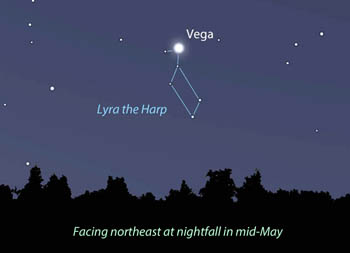
Stellarium
Seasonal stars always bring good cheer. Each May, Vega lights up the northeastern sky at nightfall with the promise of summer. On my evening walks I start by heading north up the road but soon turn east and come face to face with the sparking white star. For the next quarter mile I'm walking in Vega's direction, which also happens to be the general direction the Sun is traveling.
I saunter along at 5 km per hour tops, while the Sun rushes toward Vega at 13.4 km per second with respect to the local standard of rest, the average velocity of stars in the solar neighborhood. If you saw the movie Contact, based on the Carl Sagan book of the same name, you'll recall that Dr. Ellie Arroway, played by Jodie Foster, speeds to Vega through a wormhole, where she encounters an alien civilization.
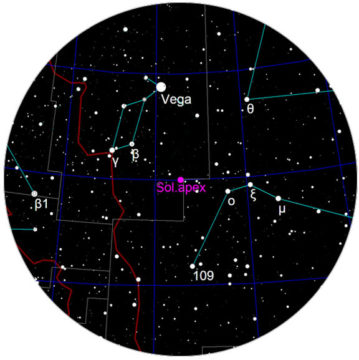
Tom Ruen
Why pick Vega? It's only 25 light-years distant, one of the nearest of the bright stars. Close enough for early TV transmissions from Earth to reach its putative alien inhabitants and for us to receive their reply 25 years later, about the time the film was produced. I only wish it were true!
Vega was a celebrity long before the movie: First bright summer star to appear in the east; first star to be photographed (July 17, 1850, by daguerreotype); first to have its spectrum photographed; and the first star discovered ringed by a disk of dust (in 1983).
When astronomers first discovered the dust ring, they thought they were seeing a long-lived asteroid belt resembling our own solar system's remote Kuiper Belt. Closer inspection indicated the disk may be temporary, however, the result of a collision between several large asteroids or comets. Fragments from the event collided with other fragments in a collisional cascade that created a disk of warm dust around the star.
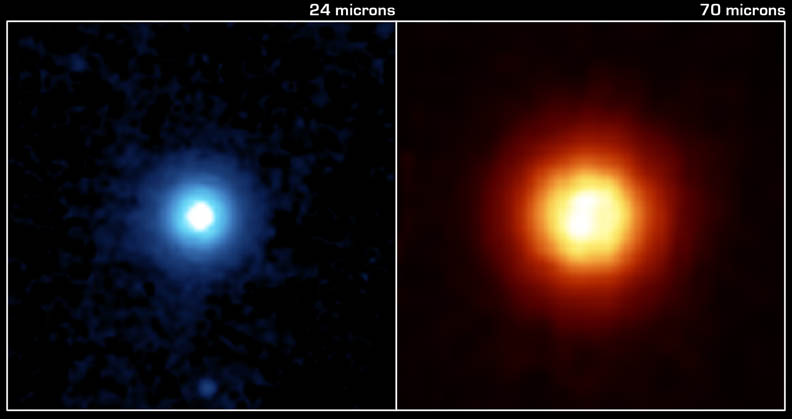
NASA / JPL-Caltech / K. Su
We see the disk face-on as it orbits Vega's equatorial region. This means our view of the star is pole-on, a fascinating perspective for you to consider the next clear night. Vega is a young star at just a tenth the Sun's age (about 455 million years old), twice as massive, and 40 times as bright. Despite these rosy numbers, Vega's doesn't score a first in the brightness category. It comes in fourth, barely edged out of third place by Arcturus, which is 0.07 magnitude brighter.
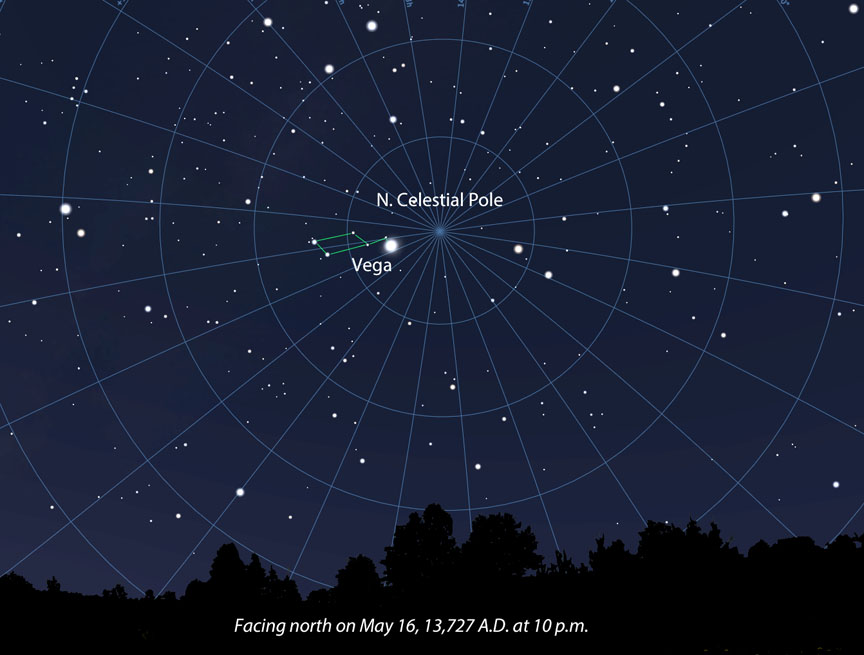
Stellarium
No matter. Arcturus will never attain the status of northern polestar but Vega will. Come 13700 AD, give or take, precession of the Earth's axis will slide this luminary about 5° from the north celestial pole. Our future descendants will finally be able to say that the North Star is indeed one of the brightest in the sky, a widespread misconception about today's North Star, Polaris.
Seeing Vega return in spring puts a smile on every clear night. Whatever it might augur for the upcoming season — including mosquitoes — I'll take in stride.
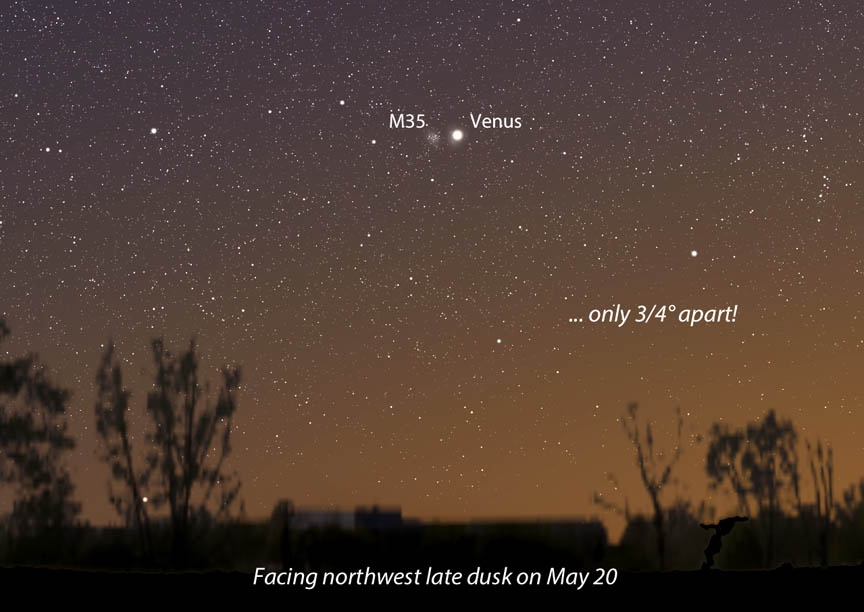
Stellarium
Around the other end of the sky, Venus stands as high as it gets at this year's evening apparition. Having passed the Pleiades in April, the planet next has a brush with Gemini's brightest star cluster, M35, on Sunday, May 20th. You can watch the two approach one another in the coming days until they reach a minimum separation of about 45′ on the 20th. They should make a pretty sight in binoculars.
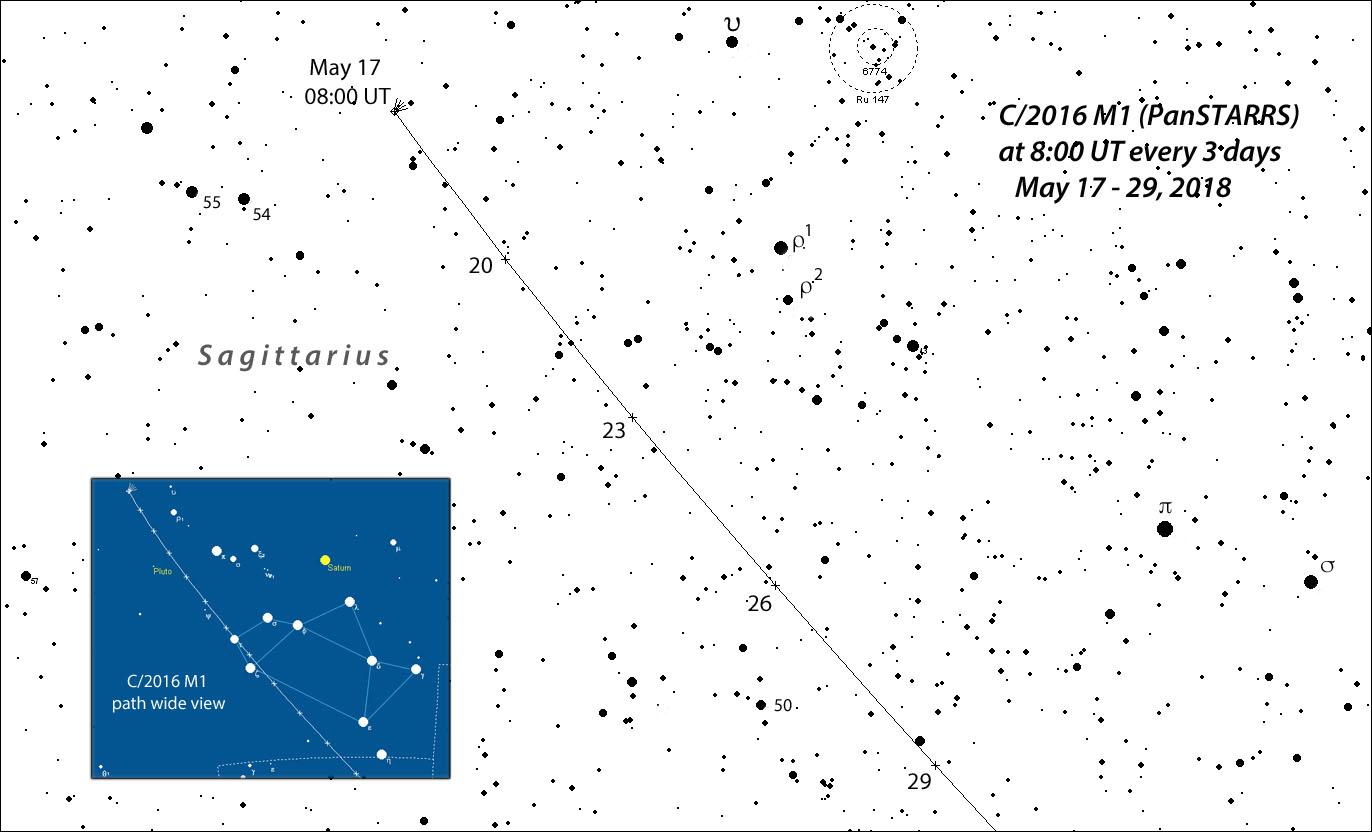
Chris Marriott's SkyMap with additions by author
While there's no shortage of bright stars and planets, easy comets are hard to come by. That should change in August and again in the fall with the returns of 21P/Giacobini-Zinner and 46P/Wirtanen. These nights, most of our favorite fuzzies hover around magnitude 12 with the exception of PanSTARRS (C/2016 M1). Located in the morning sky midway between Mars and Saturn in Sagittarius, PanSTARRS glows at magnitude 10.0. Through an 8-inch or larger telescope it's not difficult, though its declining elevation is some cause for concern for northern observers. See it while you can!
On May 16.3 UT, I saw the comet as a largish, diffuse patch of light about 4′ across with a dense inner coma using a magnification of 64× with my 15-inch reflector. Each day it gets a little brighter and should top out around magnitude 9 this summer.
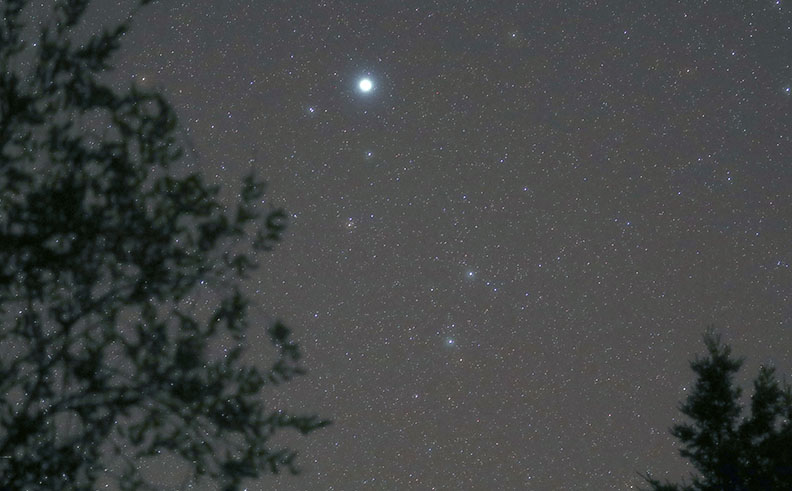
Bob King
If getting up at 3:30 a.m. is a concern, remember you're not just rising early for the comet but also to observe Mars, Saturn, and the summer Milky Way. Mars gleams at magnitude –0.8 with a 13″ wide disk, and Saturn's rings are near full tilt. And don't forget zenith-bound Vega shining gloriously over it all. Does that sweeten the deal?
 0
0








Comments
You must be logged in to post a comment.